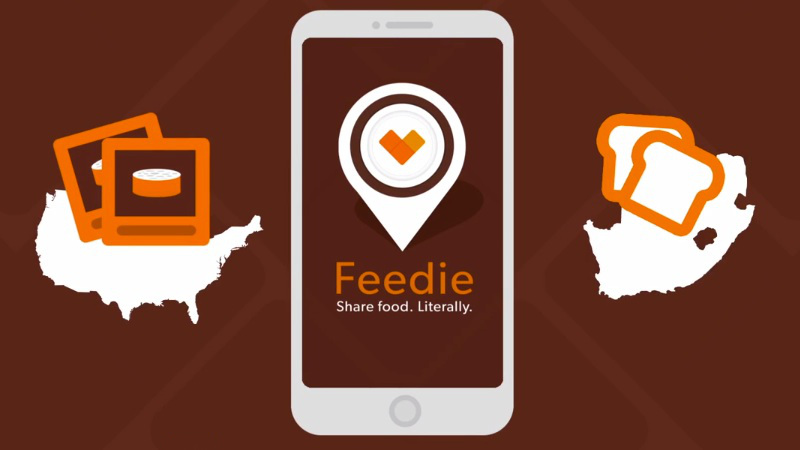Normally we’d shun anyone who shares photos of their lunch and banish them to a dark corner of the internet that will forever be populated by MySpace pages, but there is one exception to that rule. If you’re going to let friends and family know what you’re about to eat, do it with Feedie.
Feedie is a new photo-sharing app from Topaz Page-Green, the founder of feed the needy charity the Lunchbox Fund. Every time you share a picture of food served to you at a participating restaurant, from a cappuccino or a salad to ribs and steak, The Lunchbox Fund will donate one meal to a less-fortunate child. It’s simple: snap a photo of what’s on your plate at a participating Feedie restaurant and a child will receive a full, nutritious meal (via the Lunchbox Fund).
The app was originally launched in the US last year, and has just been launched in South Africa with 24 restaurants already signed up for use.
The Lunchbox Fund was initially setup to address the deficit between the government feeding programme and the amount of children that actually need to be fed every day at schools. “There are 12 million kids that live below the poverty line and government provides meals to eight million… but there’s a gap of 4 million and that’s where we come in,” explains Page-Green. “We provide meals in early childhood development centres, supplementary feeding in primary schools and high school feeding programmes.”
While in South Africa to launch Feedie locally, Page-Green sat down for an exclusive interview with htxt.africa to talk philanthropy and food.
Feedie started in New York in October last year. The app was designed (pro-bono) by a global ad agency Tribal Worldwide and coded by Media Monks, a creative digital production company based in Amsterdam. Feedie also has international ambassadors such as Jamie Oliver in Europe, Mario Batalli in the US and now, Peter Tempelhoff to represent the brand in South Africa.
“People are very fascinated with the simplicity and idea of [Feedie] that they all want to be a part of it. It’s less about participating in charity and more about being a part of an innovative thing,” continues Page-Green.
Unfortunately, donor fatigue is becoming a worldwide phenomenon and an issue many charitable organisations are faced with. When so many people are knocking on doors, deciding what to give who, when you can only do so much, is extremely limiting.
Technology is the answer
“You’re not guaranteed a positive outcome after putting in a lot of work…” says Page-Green. “The one-for-one model – where you buy something and the same product gets donated – is very popular, but it’s difficult to do it on a very large-scale. We realised that technology is the answer. People have a tremendous passion for taking photos of food so we found an opportunity for a niche. It’s a very simple idea: we combined the love of food, philanthropy and passion for technology and created Feedie, which replicates the one-for-one model within the app.”
Restaurants sign up to be a part of Feedie. They pay a subscription fee of R2 500 annually which is renewable at the end of every year. For every 1 000 restaurants that sign up in South Africa, the Lunchbox Fund feeds 5 000 kids. (In the US Feedie charges $5 000 a year, so for every 1 000 restaurants that sign up, they feed 10 000 kids a year.) It costs the Lunchbox Fund approximately R2.50 to feed each child.

“Restaurants get a lot out of participating in Feedie. They get amplified social advertising, tax deduction and being a part of this brilliant thing,” adds Page-Green. “Everything we raise goes towards feeding the kids.”
Feedie also provides restaurants with digital toolkits which makes the package very simple.
Locally, over 20 top eating spots have already signed up to be Feedie restaurants including Tashas, Bukhara, Mumbai Masala, Swad, Belhazar, Mondiall, Knead, Haiku, Willoughby and Co, The River Cafe and more. (To find a participating Feedie locale, you can also open the app and search for a restaurant around you based on your current location.)
“We provide meals in early childhood development centres, supplementary feeding in primary schools and we provide feeding programmes in high schools. We work with the Department of Education to make sure that areas we go to are indeed areas that are in need,” says Page-Green.
“We started very humbly by feeding 100 kids a day, now we feed around 6 000 kids a day. Our goal is to be feeding 50 000 kids by 2016 and a lifetime goal of 4 million kids because that’s the deficit. We want to fill the gap so that every kid has food in their stomachs so that they can feel that there’s an omnipotent eye out there that cares enough to make sure they have something in their stomachs.”
By sharing your food or drink photos at participating Feedie restaurants, you’ll be giving a meal to orphans and impoverished kids in townships and rural schools. The Lunchbox Fund currently has programmes in Limpopo, Western Cape, Eastern Cape, Northern Cape, Gauteng and will be expanding into KZN next.
You can download Feedie for iOS here. The Android version of the app will be available in the beginning of May.
[Image: supplied]

